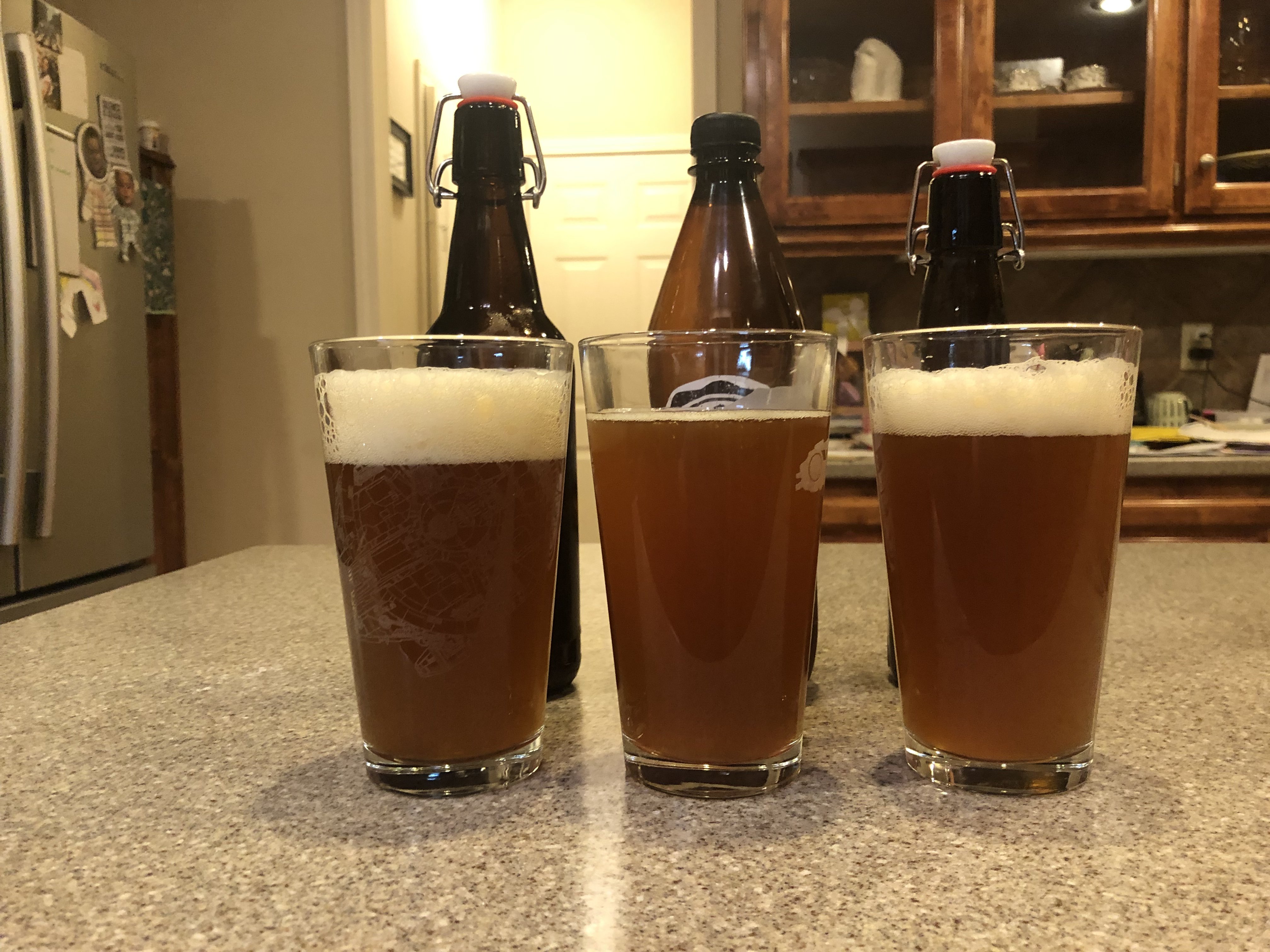I did a 5-gallon batch of saison that I then split into two 3-gallon fementers so I could experiment with one side and compare the two.
In one fermenter, I added mango juice after primary fermentation. After 16 days in the fermenters, the mango side had held steady at 1.004 for three days, and so I decided to bottle.
I wrongly assumed that the regular "control" fermenter would be ready too (because it presumably had less sugar to ferment since no mango juice was added).
That assumption was wrong. Within 3 hours, the control bottles were clearly carbing faster than the mango bottles (I fill a small number of plastic bottles to be able to check on carbonation levels).
I think the control bottles are still fermenting (all bottles had same priming solution/amounts, individually added). So....all the control bottles accept 1 are either swing top or screw on, so I've been able to let out the pressure a couple of times (to roughly match the mango bottles - which seem to be carbing at a normal rate)......but, should I just let the control bottles carb up to normal finished level and then put in the fridge? Would that essentially stop the fermenting, with the bottles now carbed (just at a quicker than normal rate)?
-Also, all the bottles are contained in a cooler for now - to guard against blowouts/explosions).
Appreciate any advice anyone may have.
In one fermenter, I added mango juice after primary fermentation. After 16 days in the fermenters, the mango side had held steady at 1.004 for three days, and so I decided to bottle.
I wrongly assumed that the regular "control" fermenter would be ready too (because it presumably had less sugar to ferment since no mango juice was added).
That assumption was wrong. Within 3 hours, the control bottles were clearly carbing faster than the mango bottles (I fill a small number of plastic bottles to be able to check on carbonation levels).
I think the control bottles are still fermenting (all bottles had same priming solution/amounts, individually added). So....all the control bottles accept 1 are either swing top or screw on, so I've been able to let out the pressure a couple of times (to roughly match the mango bottles - which seem to be carbing at a normal rate)......but, should I just let the control bottles carb up to normal finished level and then put in the fridge? Would that essentially stop the fermenting, with the bottles now carbed (just at a quicker than normal rate)?
-Also, all the bottles are contained in a cooler for now - to guard against blowouts/explosions).
Appreciate any advice anyone may have.






















![Craft A Brew - Safale BE-256 Yeast - Fermentis - Belgian Ale Dry Yeast - For Belgian & Strong Ales - Ingredients for Home Brewing - Beer Making Supplies - [3 Pack]](https://m.media-amazon.com/images/I/51bcKEwQmWL._SL500_.jpg)



































